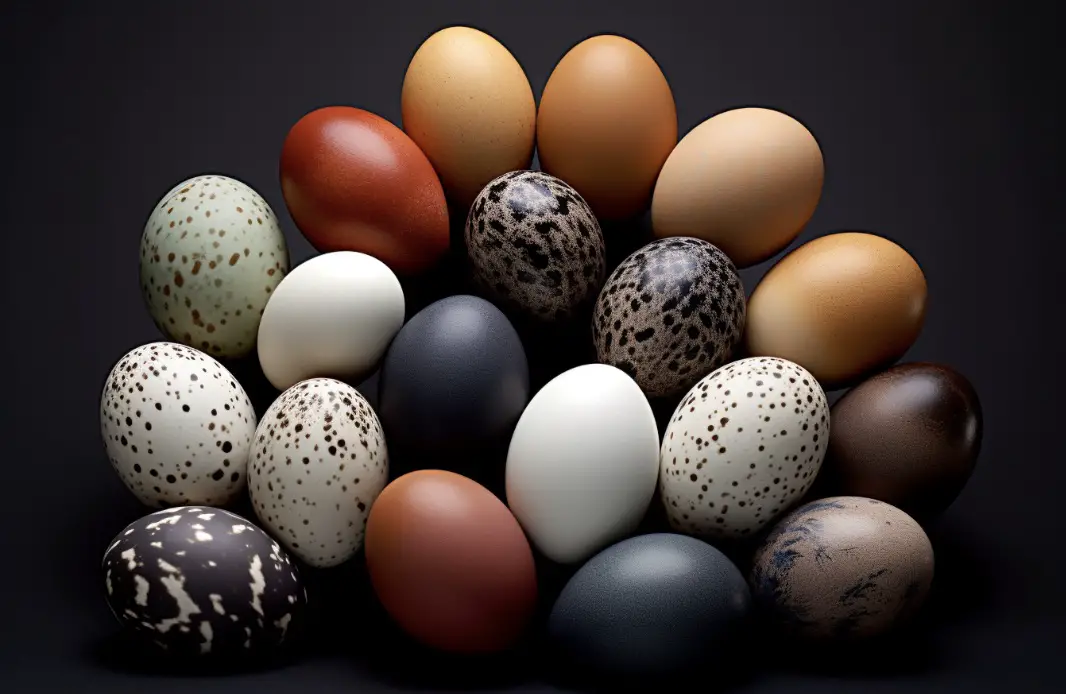The class of oviparous animals is not solely reserved for birds. Many other animals also lay eggs, including reptiles, fish, and monotremes.
Although the process of laying eggs is achieved in different ways within each species, one commonality is that such animals serve as eggs-laying creatures aside from birds.
- Reptiles: Alligators, snakes and turtles are some examples of popular reptilian egg-laying creatures.
- Fish: Many species of fish reproduce through laying eggs. Cartilaginous (e.g. sharks) and bony fish (e.g. salmon) both produce an egg that develops outside the mother’s body.
- Monotremes: These mammals have both reproductive organs but they don’t give birth to live young ones. Duck-billed platypus and echidnas are notable examples of monotremes that lay eggs.
- Insects: Insects form the largest group of animals on Earth and many of them reproduce by laying eggs. Examples of insects that lay eggs include butterflies, bees, ants, beetles, flies, and mosquitoes.
- Crustaceans: Crustaceans are a group of arthropods that includes animals such as crabs, lobsters, shrimp, and crayfish. Most crustaceans lay eggs, which are usually carried and protected by the female until they hatch.
- Amphibians: Amphibians are cold-blooded vertebrates that typically undergo metamorphosis from aquatic larvae to terrestrial adults. Most amphibians, including frogs, toads, and salamanders, lay eggs in water. These eggs are usually jelly-like masses that are laid in ponds, streams, or other aquatic habitats.
Apart from these classes of animals already mentioned earlier as egg-laying creatures like non-avian reptiles, fish and monotremes; there is still a class of animals that could be considered as separate egg-laying organisms just like the modern-day bird.
However, in most cases above mentioned are usually categorized as distinct groups from ordinary birds due to their peculiar characteristics.
Contents
Mammals that lay eggs
To explore mammals that lay eggs, we are going to look at the platypus and the echidna. These fascinating creatures have intrigued scientists for centuries and are the only mammals that lay eggs instead of giving birth to live young. By examining these animals, we can learn more about their unique adaptations and how they have evolved to survive in their environments.
Platypus
The Unique Qualities of the Platypus
The platypus is a mammal that lays eggs, and it has some unique qualities that set it apart from other mammals.

In this table, we shall delve into the physical attributes of the platypus to further understand its uniqueness.
| Physical Attribute | Description |
|---|---|
| Fur and Skin | Waterproof, dense, soft |
| Webbed Feet | Useful for swimming and digging |
| Bill | Sensitive to electroreception |
| Venomous Spurs | Can inflict pain on predators |
The platypus also has a duck-like bill which is soft and sensitive to touch, allowing for its detection of electrical fields generated by prey. In addition, male platypuses have venomous spurs on their hind legs which can cause severe pain for potential predators.
Don’t miss out on learning more about these fascinating creatures that defy traditional mammal stereotypes. Explore more about the unique features of these egg-laying mammals to gain a deeper appreciation for the diversity of life in our world.
Why settle for just being a mammal or a reptile when you can be both? Meet the echidna, the spiky little proof that evolution loves to mix things up.
Echidna
The spiny monotreme’s oviparous nature, commonly known as an egg-laying mammal, sets it apart from other mammals. Found only in Australia and New Guinea, the Echidna is equipped with a coat of sharp quills that protect them from predators. These creatures exhibit unique features such as laying soft-shelled eggs and have no teats for milk production.
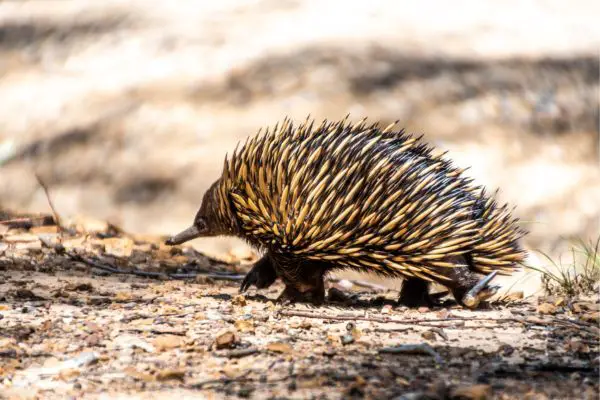
Their eggs are first held inside their bodies before being deposited into the pouch, where they are incubated until hatching. Once born, the hatchlings feed on milk secreted through specialised pores on the mother’s skin, which is lapped up by their little beaks. The Echidna’s lifespan ranges between 15 to 20 years in the wild.
With limited time spent on land due to hunting pressures and habitat changes, conservationists work to preserve their territories while educating communities on sustainable living practices. These fascinating mammals are threatened by climate change and habitat loss. Thus, protection of their species is essential to maintain biodiversity on Earth.
Reptiles that lay eggs
To learn more about reptiles that lay eggs, dive into this section titled ‘Reptiles that lay eggs’ which is part of our article ‘What animals lay eggs but are not birds?’. Here, we’ll uncover the unique qualities of these egg-laying animals, and why they differ from birds in certain ways. Our focus will be on snakes, lizards, turtles, and crocodilians, each with their individual characteristics.
Snakes
Studying the oviparous creatures known as serpents brings to light fascinating information. These legless reptilian species are among the unique breed of animals that lay eggs, making them intriguing to study.

This table shows some fascinating data about various types of snakes, including their size, habitat, and number of offspring.
| Type of Snake | Size | Habitat | Number of Offspring |
|---|---|---|---|
| Black mamba | Large | Savannas, rocky areas | 6-25 eggs |
| King cobra | Large | Forests, grasslands | 20-40 eggs |
| Reticulated python | Very large | Forests, grasslands | Up to 100 eggs |
| Eastern diamondback rattlesnake | Large | Forests, grasslands | 6-42 eggs |
| Green anaconda | Very large | Amazon rainforest | 20-40 live young |
| Inland taipan | Medium | Arid regions | 6-25 eggs |
| Gaboon viper | Medium | Rainforests | 20-40 live young |
| Tiger snake | Medium | Wetlands, forests | 20-40 live young |
| Boomslang | Medium | Woodlands | 10-25 eggs |
| Copperhead snake | Medium | Forests, grasslands | 3-10 live young |
| Western diamondback rattlesnake | Large | Deserts, grasslands | 6-21 eggs |
| Eastern coral snake | Small | Forests, swamps | 3-21 eggs |
| Black-headed python | Large | Woodlands | 10-30 eggs |
| Puff adder | Medium | Savannas, grasslands | 20-40 live young |
| Water moccasin | Medium | Swamps, marshes | 6-18 live young |
| Red-bellied black snake | Medium | Forests, grasslands | 5-14 live young |
| Eyelash viper | Medium | Rainforests | 6-30 live young |
| Indian rock python | Very large | Forests, grasslands | Up to 100 eggs |
| Costa Rican bushmaster | Large | Rainforests | 8-24 eggs |
| Eastern brown snake | Medium | Woodlands, grasslands | 5-14 live young |
Please note that the information provided for the size, habitat, and number of offspring is general and can vary within each species.
It’s worth noting that not all reptiles in the snake category are oviparous. Some give birth to live young through a process called viviparity. However, an array of snakes like Pythons and Rat Snakes lay eggs ranging anywhere from a single egg up to 100 in one go!
Some snakes hatch their eggs inside their bodies
As a biologist with a deep fascination for reptiles, particularly snakes, I have studied the reproductive strategies of various snake species. One intriguing phenomenon that occurs in certain snakes is internal egg incubation, where eggs develop and hatch inside the female snake’s body. This reproductive strategy, known as ovoviviparity, is quite unique and has evolved in several snake lineages. It never ceases to amaze me how nature can come up with such diverse and intricate methods of reproduction.

Internal egg incubation, or ovoviviparity, occurs in snakes when the eggs are retained within the female’s body until they are ready to hatch. This is in contrast to oviparity, where eggs are laid externally and incubate outside the female’s body, or viviparity, where live young are born without the production of eggs. Ovoviviparity represents a middle ground between these two reproductive strategies, combining elements of both.
During internal egg incubation, the female snake’s body provides a controlled and protected environment for the developing embryos. This enables the eggs to receive the necessary warmth and nutrients required for their growth and development. As a result, the female snake essentially serves as a mobile incubator for her offspring, carrying them until they are ready to emerge into the outside world.
One of the main advantages of internal egg incubation is increased protection for the developing embryos. By keeping the eggs within her body, the female snake shields them from potential predators and harsh environmental conditions that could otherwise harm or destroy the eggs. As a biologist who has had the privilege of observing various snake species in the wild, I have witnessed firsthand the challenges faced by reptile offspring during incubation. Many snake nests are vulnerable to predators, such as raccoons, skunks, and birds, who eagerly seek out these protein-rich delicacies. By retaining the eggs internally, the female snake offers a safer and more secure environment for her progeny.
In addition to enhanced protection, internal egg incubation also allows the female snake to regulate the incubation conditions more precisely. She can adjust her body temperature to provide optimal warmth for the developing embryos. This ability to thermoregulate ensures that the eggs receive the necessary heat for proper development, even in variable environmental conditions. As a biologist, I have had the opportunity to study snake behavior and witnessed the remarkable ability of female snakes to bask in the sun or seek shade to maintain the ideal temperature range for their developing eggs.
While internal egg incubation offers numerous benefits, it also presents some challenges for the female snake. As the embryos grow and develop within her body, the female must allocate resources to support their nourishment. This places a greater demand on her energy reserves and metabolic processes. I have observed in my research that pregnant female snakes often exhibit changes in behavior and physiology, such as reduced activity levels and altered feeding patterns, as they allocate resources to the developing embryos. This trade-off highlights the incredible sacrifices and adaptations that occur in the reproductive strategies of snakes.
Once the eggs have completed their development and are ready to hatch, the female snake gives birth to live young. The birth process can vary among snake species, ranging from simultaneous expulsion of all the young to sequential births over a period of time. Witnessing the emergence of live snake hatchlings from the female’s body is a remarkable event that I have been fortunate to observe in my fieldwork. It never fails to fill me with awe and admiration for the wonders of nature.
In conclusion, internal egg incubation, or ovoviviparity, is a captivating reproductive strategy observed in certain snake species. It provides advantages such as increased protection and precise control of incubation conditions for the developing embryos. However, it also imposes metabolic demands on the female
A colleague studying at-risk pythons came across small movements underfoot during her research observation; upon closer inspection, she discovered several newly hatched baby pythons. It was an exceptionally rare occurrence to witness the delicate beginning stages of these slithering surprising creatures–one could say she witnessed new life unfolding right before her very eyes!
Lizards
Reptiles that have the ability to lay eggs are fascinating creatures. They belong to a diverse group of animals known as “scaled reptiles.” These creatures are easily recognizable by their long tails, scaly skin, and unique body shapes.
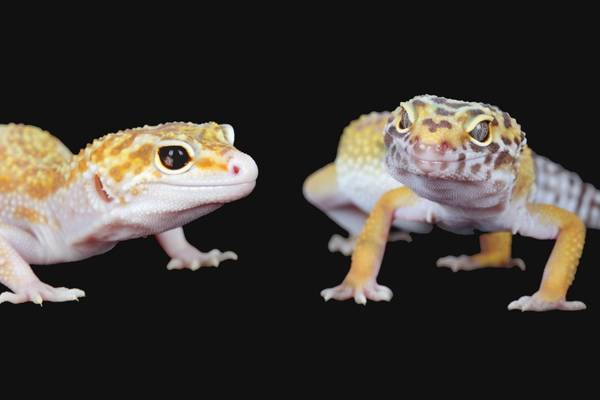
Lizards, specifically, belong to this group of egg-laying reptiles. They are among the most common type of reptiles found on planet earth and come in various sizes and colors. They thrive in a wide range of environments such as forests, deserts, and even aquatic habitats.
Did you know that Lizards have specialized adaptations that allow them to survive in their respective environments? For instance, desert lizards have evolved thin skin that allows them to absorb more water from their surroundings while aquatic lizards have webbed feet that enable them to swim effectively.
Interestingly, prehistoric lizards date back millions of years ago with some species growing up to six meters long!
Don’t underestimate turtles, they may be slow, but they’re the OGs of laying eggs in a tough shell.
Turtles
These brilliant creatures can lay between one and 30 eggs at once, depending on their species. The eggs are soft initially but gradually become harder with time. Some turtle species nest during specific times of the year, while others can lay eggs throughout the year. After laying her eggs, the female turtle carefully covers them with sand or soil before returning to her habitat.
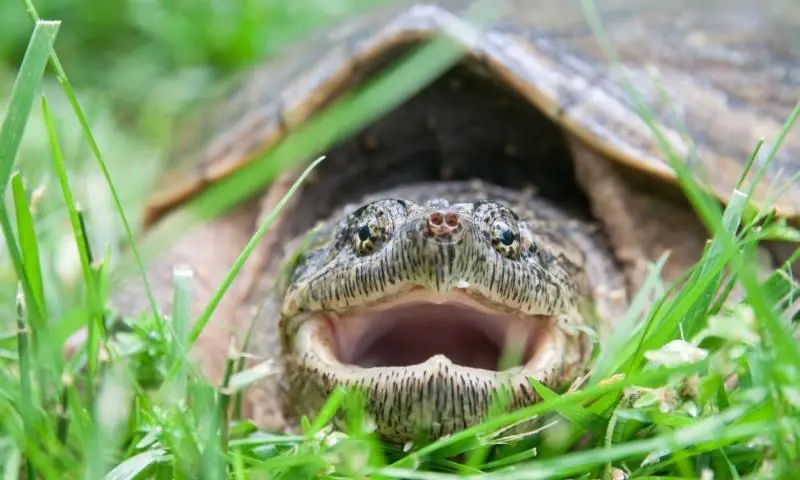
Interestingly enough, turtles hold significant cultural meaning across many societies globally. For example, Native Americans viewed turtles as symbols of mother earth and fertility. In Ancient China and Japan cultures, turtles were thought to bring good fortune and longevity.
Whether it’s for their distinctive physical features or spiritual significance in different cultures worldwide, turtles remain an important aspect of our world today – one we must protect at all costs!
Did you know crocodiles can lay up to 60 eggs at a time? That’s a lot of tiny jaws to avoid.
Crocodilians
Below is an informative table about Crocodilians, highlighting some key features:
| Category | Details |
|---|---|
| Appearance | Long snouts and tails |
| Habitat | Freshwater bodies |
| Diet | Carnivorous |
| Reproduction | Lay eggs |
Crocodilians are known for their unique physical traits such as sharp and strong jaws, tough hides, and excellent swimming abilities. They prefer freshwater habitats and mainly feed on fish, birds, mammals, and other reptiles. These creatures also have impressive reproductive systems that involve laying eggs, usually on the shores or banks of rivers or lakes.
Did you know that the American crocodile is one of the largest reptiles in North America? They can reach lengths of up to six meters! (Source: National Geographic)
Why settle for boring old chicken eggs when you can have the exotic delicacy of amphibian eggs?
Amphibians that lay eggs
To discover the diverse group of animals that lays eggs but are not birds, you need to explore the section on amphibians that lay eggs. This section will examine different types of amphibians and their egg-laying habits. The sub-sections comprising of frogs, toads, and salamanders will be briefly introduced as solutions to finding the answer.
Frogs
Below is a table with various facts about frogs:
| Characteristic | Detail |
|---|---|
| Skin | Moist and smooth, often brightly colored |
| Diet | Carnivorous, eating insects and small animals |
| Reproduction | Lay eggs in water or moist environments, undergo metamorphosis |
| Habitat | Found near bodies of water or moist environments |
Did you know that some species of frogs can actually freeze over the winter and then thaw out? This allows them to survive in colder climates where other amphibians cannot.
Pro Tip: Be aware that some species of frogs are becoming endangered due to changing habitats and pollution. Take care to protect these important creatures.
Why did the toad get a job as a banker? Because he wanted to jump on every opportunity.
Toads
These amphibians that lay eggs are commonly known as ‘Bufonidae‘. For the heading ‘Toads‘, let’s delve into some specific details. Below is a table showcasing different species and their unique characteristics:
| Species | Egg-laying Habitat | Gestation Period (days) |
| American Toad | Shallow Water | 4-12 |
| Bufo Bufo | Lakes and Ponds | 7-21 |
| Cane Toad | Standing Water | 1-3 days for tadpole hatching, up to 49 for metamorphosis into adult form. |
As we can see from the table, each species of toad has its own preferred egg-laying habitat. Additionally, there is quite a variance in the gestation period across species.
Pro Tip: Maintaining a healthy and varied habitat around your home can help create an environment that supports different breeds of amphibians like these egg-laying toads.
Why did the salamander cross the road? To get to the other swamp, of course!
Salamanders
Salamandridae, a family of amphibians, lay their eggs underwater. These creatures are known for their unique ability to regenerate body parts. Their skin is smooth and moist, and they are found in both terrestrial and aquatic habitats.
| Salamanders | Description |
|---|---|
| Eastern Hellbender | Aquatic giant salamander with rough, flat head; brownish-yellow body; and concealed gills. |
| Tiger Salamander | Terrestrial with bold yellow stripes or spots; stout build; short snout; can survive in harsh environments. |
| Mole Salamander | Black or dark-colored blotchy pattern on a long slender body with short legs and elongated tail. |
Salamanders use their tongues to capture prey and have glands that secrete poisonous substances to defend against predators. Some species also have bright coloration that signals toxic chemicals in their skin.
One salamander enthusiast recalls seeing the rare Eastern Hellbender during a river survey on a hot summer day. He was surprised to see the large creatures hiding under rocks in shallow water but felt grateful for the opportunity to witness them in their natural habitat.
Why settle for just one way to reproduce when you can lay eggs like both a fish and an amphibian?
Fish that lay eggs
To understand fish that lay eggs, including cartilaginous fish (sharks, rays) and bony fish, as solution briefly, let’s dive into the section – Fish that lay eggs. The section will explore animals that lay eggs but are not birds. And to get a better understanding, we will discuss two sub-sections briefly – Cartilaginous fish and Bony fish.
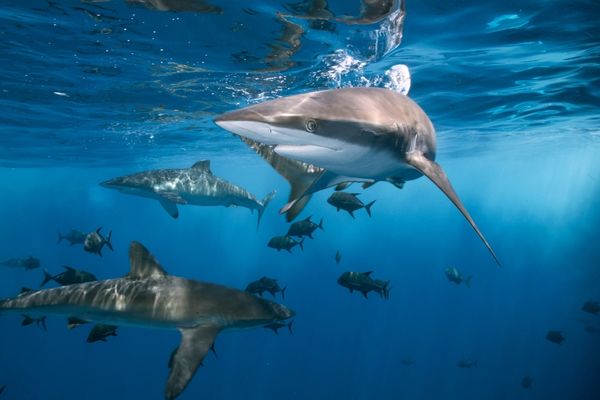
Cartilaginous fish (sharks, rays)
Cartilaginous fish, including sharks and rays, are unique aquatic creatures that are distinguished by their cartilaginous skeletal system. These species possess remarkable features that enable them to flourish gracefully in their habitats.
| Column 1 | Column 2 |
|---|---|
| Order | Carcharhiniformes, Myliobatiformes |
| Habitat | Saltwater and freshwater |
| Lifespan | Varies |
| Reproduction | Oviparous |
These fish lay eggs known as mermaids’ purses or egg cases. The female Cartilaginous fish will carry the egg case until the embryo inside matures enough to hatch. The gestation period varies according to species, temperature, and other environmental factors.
Interesting fact: Sharks have the longest gestation period of any known vertebrate – up to two years for some species!
The successful breeding of Cartilaginous fish is crucial as these species facilitate a healthy marine ecosystem. To ensure their survival, it is important to conserve breeding grounds and set up protections around areas where they gather seasonally. In addition, reducing plastic pollution within their habitats would benefit the entire food chain since these creatures may ingest microplastics.
By taking measures to protect Cartilaginous fish habitats and regulating overfishing practices, it is possible for us as humans to appreciate these creatures without putting them at risk of extinction.
What do you call a bony fish that’s also a picky eater? A sushi snob.
Bony fish
Bony fish are classified under the superclass Osteichthyes, which includes ray-finned and lobe-finned fishes.
These unique creatures have several distinctive features such as gills to breathe underwater and scales that help them glide through water efficiently. Bony fish come in an array of sizes and shapes, from small anemonefish to large predatory groupers.
Pro Tip: A diet rich in omega-3 fatty acids can help keep your body healthy and reduce the risk of heart disease. Try incorporating more bony fish into your meals for a delicious and nutritious source of this essential nutrient.
Why settle for boring old chickens when you can have invertebrates laying your breakfast eggs?
Invertebrates that lay eggs
To learn more about invertebrates that lay eggs, explore this section with a focus on insects, arachnids, and crustaceans. These sub-sections offer a solution to understanding which animals lay eggs but are not birds.
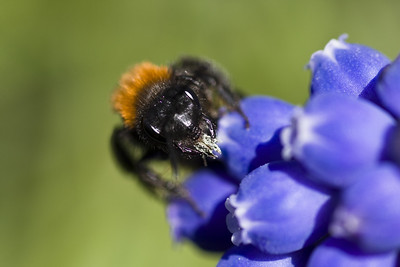
Insects
- Most insects have three body sections: head, thorax, and abdomen.
- Insects usually have two pairs of wings and three pairs of legs.
- Their exoskeletons provide protection while also limiting growth.
- Many insect species go through metamorphosis as they transition from egg to adult.
- Bees, butterflies, and beetles are some examples of insects that play vital ecological roles.
- Insects can also cause problems for humans by spreading disease or damaging crops.
Interestingly, some insects exhibit unique behaviors in regards to egg laying. For example, female stick insects can reproduce without mating through a process called parthenogenesis.
A researcher once discovered an extraordinary situation involving an ant species that lays its eggs on host plants instead of underground nests like other ants. The researcher observed how the larvae hatched and started walking down the plant stem towards their parent colony located below the surface. This discovery highlighted the incredible adaptability that insects possess and demonstrated the diversity of their egg-laying strategies.
Arachnids: they don’t just lay eggs, they spin them. #WeavingNewLifeGoals
Arachnids
The eight-legged creatures categorized as Arachnids are known for laying eggs. Let’s dive deeper into the details of their egg-laying process.
Below is a table that provides factual information about different arachnid species and their respective egg-laying habits:
| Species | Number of Eggs Laid | Incubation Period (Days) |
|---|---|---|
| Spiders | Varies, ranging from few to hundreds | Varies depending on species |
| Scorpions | Approximately 20-30 | Around 28-30 days |
| Ticks | Thousands | Several weeks depending on temperature and humidity |
| Mites | Hundreds | Several days to several weeks depending on temperature and humidity |
Interestingly, a few species of scorpions give birth to live young rather than laying eggs.
In addition to the above facts, some female spiders produce nutritious silk coverings over their eggs, while others guard their eggs until hatching. Tarantulas have even been observed sacrificing themselves by allowing their young to consume them for sustenance.
Who needs an Easter egg hunt when you can just look under the nearest crab’s shell?
Crustaceans
The exoskeleton-clad aquatic creatures that belong to the taxonomic category of ‘Crustacea’ lay eggs. These invertebrates are mostly distinguished by their two pairs of antennae and have a highly specialized body segment.
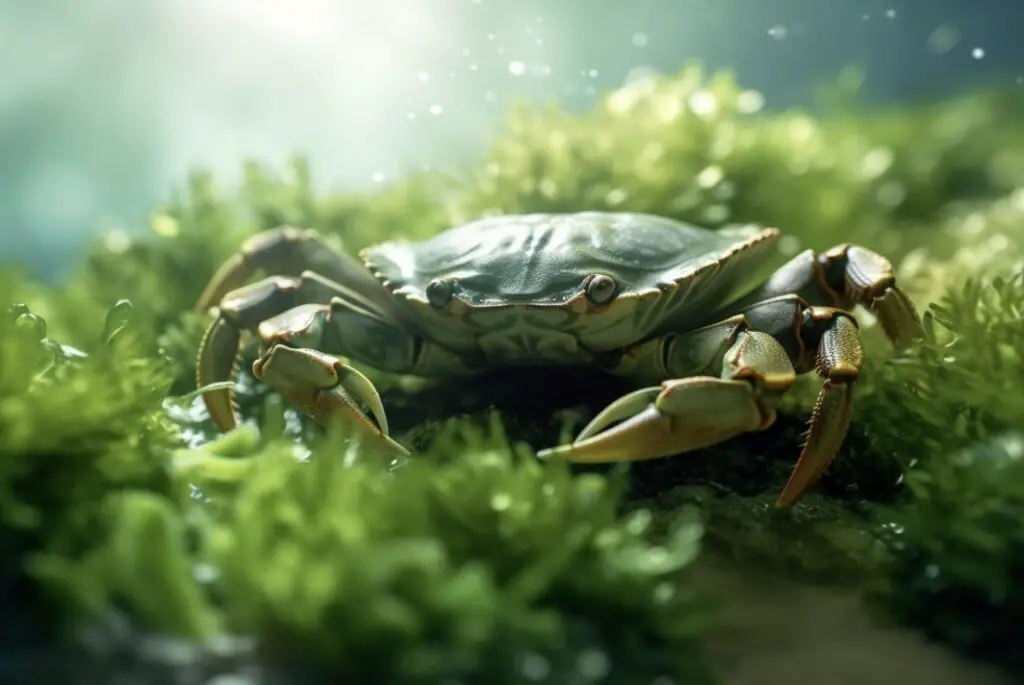
For the heading ‘Crustaceans’, below is a table with relevant columns to showcase significant details about different types of crustaceans, including their unique characteristics and egg-laying patterns.
| Type of Crustacean | Egg-Laying Pattern | Unique Characteristics |
|---|---|---|
| Lobsters | Females lay fertilized eggs in August or September. | Larger in size; mostly found in marine habitats; possess two large claws. |
| Crayfishes | Females deposit eggs during early spring, with larger species having more significant offsprings. | Mostly freshwater inhabitants with elongated bodies; move sideways like crabs. |
| Shrimps | Eggs hatch within three weeks after laying by female shrimps when water temperatures remain warm enough. | Tiny crustaceans ranging from only a few centimeters to about twenty-five centimeters long with transparent shells over their soft bodies; commonly found near deep sea-floor habitats. |
It’s worth noting that some species of Crustacea produce hundreds and even thousands of tiny eggs which undergo development through a series of closely-knit stages, right from hatching until adulthood. Such organisms usually come ashore as larvae before taking adult forms.
Interestingly, the discovery of ancient fossilized shrimps dating back to almost 700 million years revealed their existence in marine sediments from China’s Hunan province. Their fossils also displayed evidence of egg-carrying which is believed to be a similar process that modern-day Crustacea still follow.
I may never look at an egg the same way again after learning about the captivating and creepy world of invertebrate egg-laying.
Conclusion
Egg-laying animals beyond birds reveal a diverse range of species, including monotremes like platypuses and echidnas, as well as certain reptiles, amphibians and fish. These animals lay eggs that differ in shape, size and color; some are bumpy while others have tough shells to protect the developing embryo. Interestingly, reptilian and amphibian eggs require moisture to survive and develop, making them more vulnerable to environmental factors than avian or mammalian offspring.
For a captivating glimpse into these fascinating creatures’ reproductive strategies, research their unique biology.
Pro Tip: Avoid disturbing egg-laying animals or their nests in the wild to reduce human impact on delicate ecosystems.
Frequently Asked Questions
Q: What animals lay eggs but are not birds?
A: Some animals that lay eggs but are not birds include reptiles (such as snakes and turtles), amphibians (such as frogs and salamanders), and monotremes (such as platypuses and echidnas).
Q: How are the eggs of these animals different from bird eggs?
A: The eggs of these animals can vary in size, shape, and texture. For example, reptile eggs are often leathery or flexible, while amphibian eggs are jelly-like. Monotreme eggs are soft and have a leathery texture with a shiny surface.
Q: Do all mammals give birth to live offspring?
A: No, only placental mammals give birth to live offspring. Monotremes are a unique group of mammals that lay eggs instead of giving birth.
Q: How do these animals incubate their eggs?
A: Depending on the species, these animals may incubate their eggs internally or externally. For example, reptiles and some amphibians may lay their eggs in a protected area and then leave them to hatch on their own. Monotremes incubate their eggs by carrying them in a pouch or nest.
Q: Why do these animals lay eggs instead of giving birth?
A: The evolution of laying eggs rather than giving birth has various reasons depending on the species. For example, laying eggs allows reptiles and amphibians to lay many eggs at once, which helps ensure at least some of their offspring survive. Monotremes, on the other hand, are believed to have evolved this way to survive harsh environments where giving birth to live offspring would be less advantageous.
Q: Can humans give birth to eggs?
A: No, humans cannot give birth to eggs. Our reproduction is different from these animals, and as placental mammals, we give birth to live offspring.

